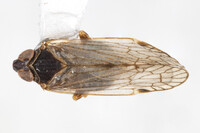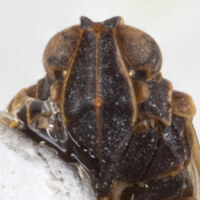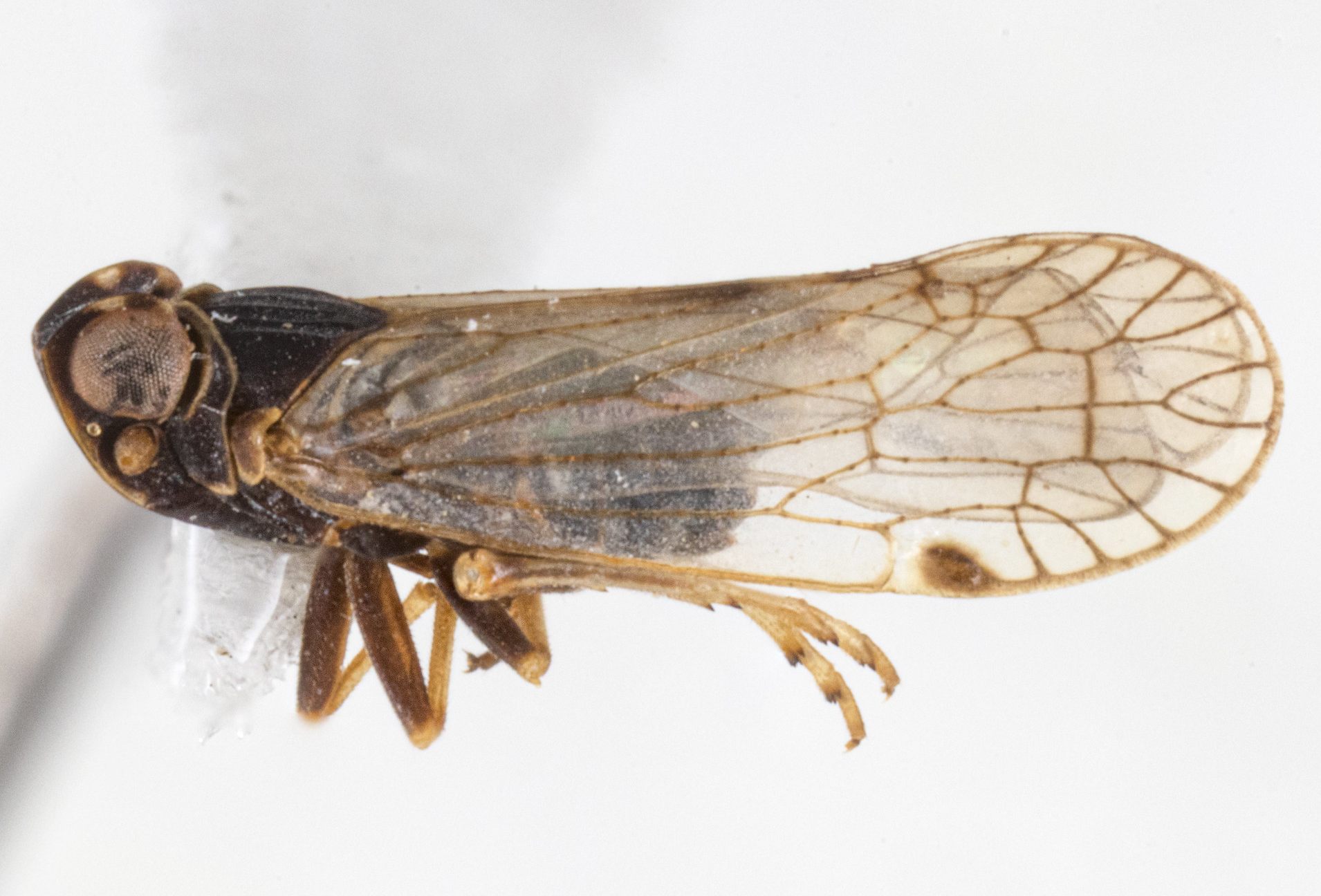
|
|
|
| synonym |
|
| description |
The vertex, mesonotum and face are fuscous in most specimens, occasionally piceous or fuscocastaneous; the mesonotal carinae are typically concolorous but can be a contrasting orange. The vertex is elongate, with the median length greater than the width at the apex of the posterior emargination. The wings are usually almost entirely immaculate, with some specimens slightly infuscated at the apical crossveins and others with a slight dusky appearance. The wing venation ranges from yellowish to light brown, becoming darker toward the apices. The stigma is a medium brown color and short. A small species, adult males are 3.4 to 4.4 mm long. (Mead & Kramer, 1982) |
| distribution |
Eastern and central North America (UDEL) |
| abundance |
Recorded from a single county in the mountains. |
| seasonal_occurrence | |
| habitat |
Meadows, herbaceous areas, open fields, etc. (Mead & Kramer, 1982) |
| plant associates |
Savannah grasses, Carpinus, Populus alba, Quercus alba, Alnus rugosa, Andropogon furcatus, Spartina sp. (Mead & Kramer, 1982)
"Nymphs of cixiids are subterranean, feeding on roots and possibly fungi. The significance of adult host records is unclear. Many cixiids are presumed to be polyphagous (as adults), most often on woody plants." (UDEL) |
| behavior |
Can be attracted at night with a light. |
| comments |
This may be the most difficult genus of planthoppers, perhaps even hoppers to identify in North Carolina. A specimen currently needs to be dissected for M. sablensis in order to determine an ID. Melanoliarus sablensis resembles M. chuliotus so much that the two can only be distinguished by looking for the presence (sablensis) or absence of an apical process on the flagellum (Mead & Kramer, 1982); these two species, along with M. ecologus, are visually very similar. |
status |
[Native:]
[Introduced:]
[Extirpated:] | | list_type |
[Official:]
[Provisional:] |
| adult_id | Unmistakable and widely known Identifiable from good quality photos of unworn specimens
Identifiable from photos showing undersides, or other specialized views [e.g., legs, face]
Identifiable only by close inspection of structural features or by DNA analysis NULL |
| nymph_id | Unmistakable and widely known Identifiable from good quality photos, especially where associated with known host plants
Identifiable from close inspection of specimens or by DNA analysis
Identifiable only through rearing to adulthood NULL |
| G_rank |
|
| S_rank |
|
| rank_comments |
|
| tribe |
Pentastirini |
| subgenus |
|
Species Photo Gallery for Melanoliarus sablensis No Common Name |
 | Photo by: C.R. Bartlett & A.T. Gonzon
Out Of State Co.
Comment: UDCC_TCN 00003015, coll. C.R. Bartlett & A.T. Gonzon; sweeping grasses/sedges in wet meadow; det. C.R. Bartlett as Melanoliarus nr. sablensis |  | Photo by: C.R. Bartlett & A.T. Gonzon
Out Of State Co.
Comment: UDCC_TCN 00003015, coll. C.R. Bartlett & A.T. Gonzon; sweeping grasses/sedges in wet meadow; det. C.R. Bartlett as Melanoliarus nr. sablensis |
 | Photo by: C.R. Bartlett & A.T. Gonzon
Out Of State Co.
Comment: UDCC_TCN 00003015, coll. C.R. Bartlett & A.T. Gonzon; sweeping grasses/sedges in wet meadow; det. C.R. Bartlett as Melanoliarus nr. sablensis |

 »
»



 »
»

